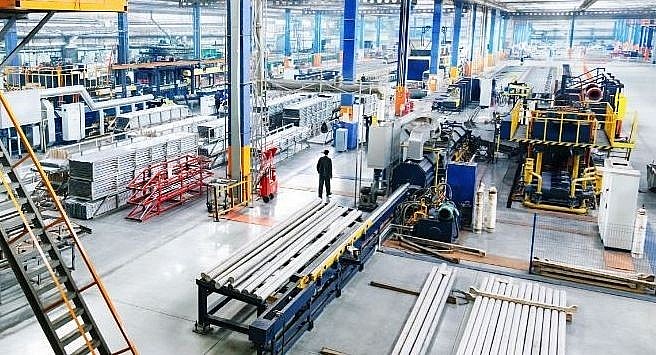 |
As India celebrates the tenth anniversary of the iconic lion logo, symbolizing its industrial strength and ambition, the country stands on the brink of a manufacturing renaissance.
Unveiled by Prime Minister Narendra Modi on September 25, 2014, the Make in India initiative has evolved beyond a government program. It has served as a rallying cry, reshaping global perceptions of India and its economic potential. The vision was clear: to position India as the world’s manufacturing epicenter, attracting investment, fostering innovation, and generating employment opportunities. This comprehensive program has unlocked India’s economic potential, paving the way for the fastest economic growth in history, supercharging local industries, and solidifying the country’s reputation as a prime investment destination.
The statistics speak for themselves. In 2014, the manufacturing sector contributed a modest 16% to India’s GDP, but this figure has risen to over 17% in 2024 and is projected to reach 25% by 2030.
India’s emergence as a global manufacturing powerhouse is exemplified by the transformation of key regions, from the bustling corridors of Gujarat’s GIFT City to Tamil Nadu’s burgeoning semiconductor hub. The story of Noida is particularly remarkable:
- The number of mobile phone manufacturing units skyrocketed from a mere 2 in 2014 to over 200 by 2024.
- Production volumes soared from 60 million units in 2014-15 to an impressive 3.1 billion units in 2022-23.
- India’s transition from a net importer to the world’s second-largest mobile phone manufacturer is a testament to its manufacturing prowess.
Fueled by policy reforms and strategic initiatives under the Make in India program, India is steadily advancing toward its goal of increasing the manufacturing sector’s contribution to GDP to 25%. This campaign has successfully lured major international companies across various industries, including electronics, textiles, defense, and automobiles, to establish their manufacturing bases in India. Corporations such as Foxconn, Samsung, Boeing, and Hyundai have expanded their operations in the country, attracted by its skilled workforce, strategic location, and generous government incentives.
The success of Make in India is underscored by the words of Commerce and Industry Minister Piyush, who highlighted India’s growing reputation as a prime investment destination. Companies worldwide are eager to set up manufacturing operations in India across a diverse range of sectors. As a result, India is not only a favored location for domestic manufacturing but also a significant player in the global market.
Milestones of Make in India
Between April 2000 and March 2024, India attracted a record-breaking total of $990.97 billion in foreign direct investment (FDI). Notably, the inflows received in the last 10 years (Apr 2014 to Mar 2024) accounted for nearly 67% of the total FDI inflows in the last 24 years, underscoring India’s increasing appeal to foreign investors.
Another remarkable achievement has been job creation. With employment increasing by nearly 36%, adding approximately 170 million jobs between 2016-17 and 2022-23, India’s economic trajectory showcases sustained and robust job creation across key sectors.
The government’s commitment to enhancing the ease of doing business has also fostered a more investor-friendly environment. Over 3,500 compliances have been decriminalized, simplifying more than 40,000 compliances and alleviating concerns about civil prosecutions.
India’s Transformed Industrial Landscape
As Make in India continues to reshape the country, several key sectors have undergone remarkable transformations, fueling economic growth and enhancing global competitiveness.
One notable success story is the MSME Sector, often referred to as the backbone of India’s economy. The launch of programs like the Udyam site, which saw over 4.7 crore registrations by July 2024, has empowered millions of small and medium-sized businesses. This, coupled with a sharp increase in loan flow, has injected new life into this vital sector.
Similarly, defense manufacturing has made significant strides, transitioning from import reliance to export leadership. India’s defense exports witnessed a remarkable surge to ₹21,083 crore in FY2024, reflecting a 32.5% growth compared to the previous fiscal year.
The Production Linked Incentive (PLI) Scheme, a cornerstone of Make in India 2.0, has been instrumental in attracting large-scale investments. With a staggering ₹1.97 lakh crore ($26 billion) allocated across 14 critical sectors, the PLI project is expected to generate an astounding ₹3.35 lakh crore in output by 2025–2026. This initiative has solidified India’s position as a global manufacturing hub in sectors such as electronics, automobiles, and pharmaceuticals.
Embracing Innovation and Technology
Make in India has catalyzed a technological revolution in the manufacturing industry. India has emerged as a leader in digital manufacturing, with the majority of Indian enterprises adopting Industry 4.0 technologies by 2023. By 2025, the country’s industrial Internet of things (IoT) sector is expected to unlock even more intelligent and efficient production methods.
Several industry leaders have set the bar high, establishing standards for leveraging technology to boost productivity.
Government Initiatives Sparking Innovation
The Indian government has introduced several programs to foster manufacturing innovation, with a particular emphasis on digital transformation. The Digital India Program has established centers for Industry 4.0 (C4i4) labs across the country, driving advancements in digital manufacturing. Additionally, the Department for Promotion of Industry and Internal Trade (DPIIT) has actively funded manufacturing-focused startups under the Startup India initiative, fostering entrepreneurship and innovation in the sector.
The G7: Committed to Building a Brighter Future with the India-Middle East-Europe Economic Corridor
The G7 summit, hosted in Italy’s stunning Apulia region, witnessed the gathering of leaders from the seven member countries: the US, UK, Canada, Germany, Italy, Japan, and France. Italian Prime Minister Giorgia Meloni extended a special invitation to India as an ‘Outreach Country’, enriching the dialogue and diversity of perspectives at this prestigious event, which took place from July 13-15.
Unlocking Potential: Brazil and Vietnam Unite for Science-Technology Supremacy
Brazil’s Minister of Science, Technology, and Innovation, Luciana Santos, has praised Vietnam for its impressive development trajectory and highlighted the nation’s vast potential for scientific and technological collaboration. Minister Santos’ affirmation underscores Vietnam’s rapid progress and its emergence as a key player in the realm of science and technology on the global stage.
Vietnam and Laos Enhance Security Cooperation: Vietnam News Today (Mar 20)
Vietnam News Today (Mar 20): Vietnam and Laos strengthen security partnership; Netherlands pledges support for sustainable sand mining and water management in Vietnam; Hanoi and Vientiane enhance business collaboration; FDI sector emerges as a crucial driver of Vietnamese economic growth: Vietnam Business Forum.








